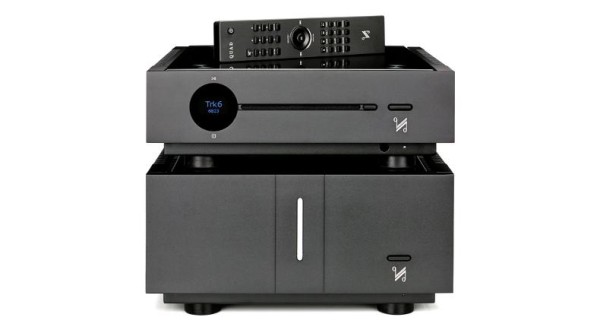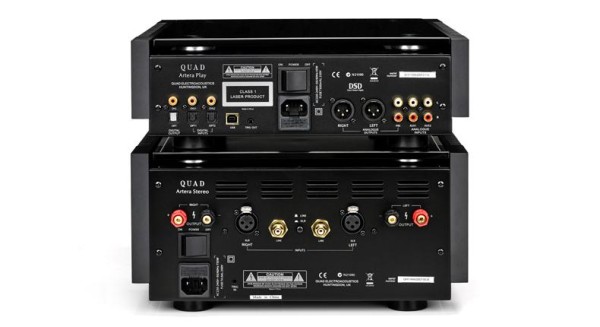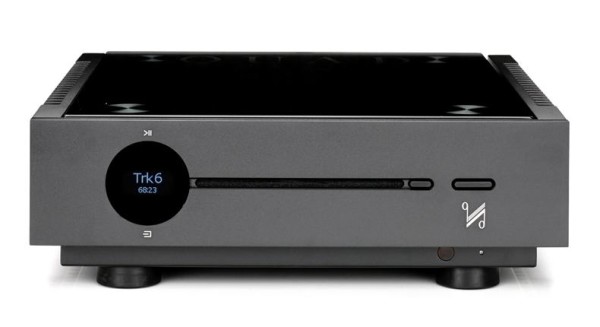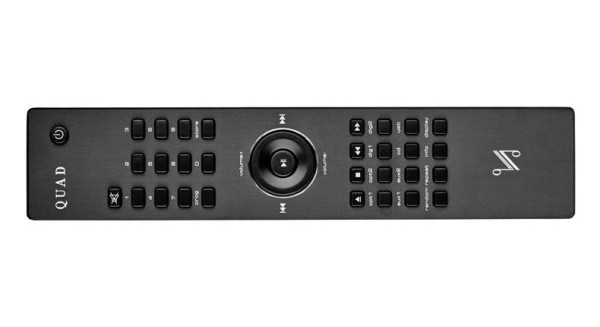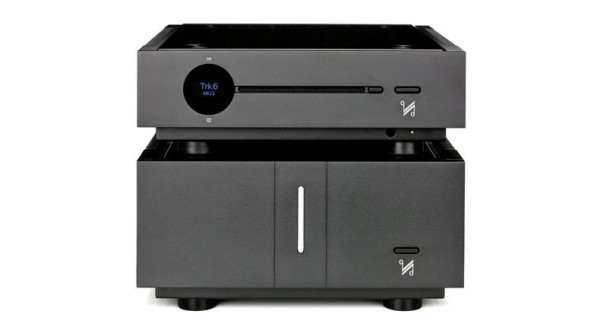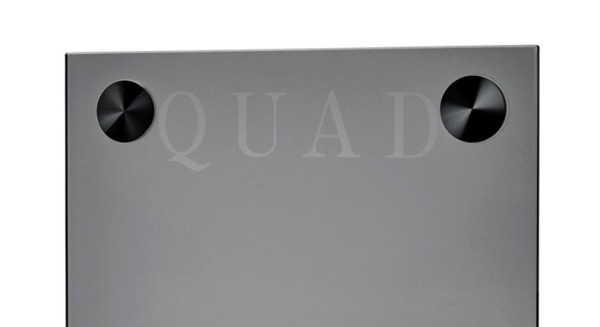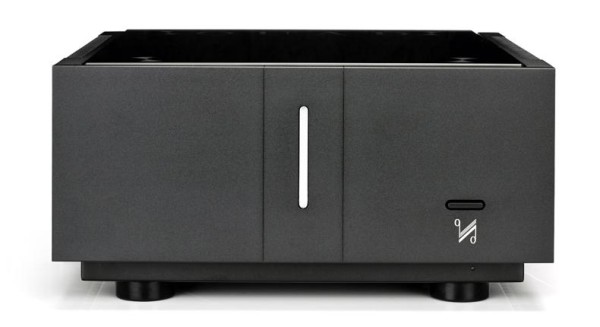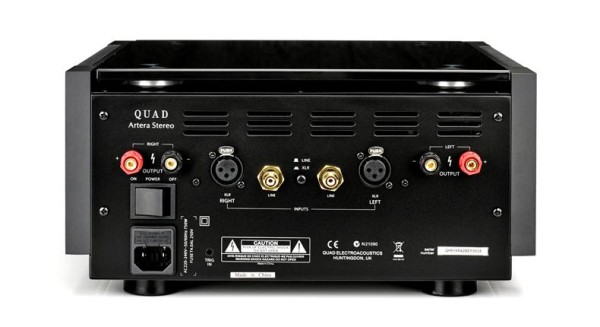QUAD ARTERA PLAY & ARTERA STEREO REVIEW
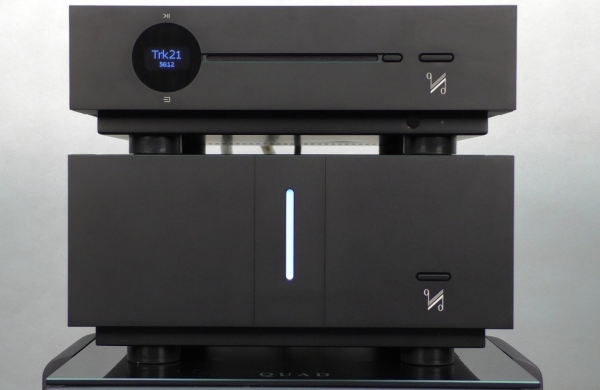
ERDICT
- A compact system that can go big and loud, but lacks the ability to really draw us in
FOR
- Big scale from a small system
- Good connectivity options
- Good instrument separation and organisation
- Plenty of bass weight for a neutral system
AGAINST
- Lacks expression and insight
- Timing could be better
- Music doesn’t tie together well
- Lacks enthusiasm
Take one look at Quad’s Artera range and we challenge you not to want to take a listen.
The duo – the Artera Play CD player/DAC/preamp and the Artera Stereo power amp – are so beautifully designed that it’s a love-at-first-sight situation; we’re in love with the idea of them before we’ve even get to know them.
They don’t have to come as a pair, but they’re quite obviously designed to, so much so that we can’t see why you would consider buying one without the other. For that reason, we’re testing them as a system, so all you need to do is add speakers.
BUILD
There’s something of a nod to Quad’s history in the Artera range.
Indeed Rodney Mead, the man behind many of Quad’s classic hi-fi products from the 1970s through to the 1990s, was involved in their design, which uses a sturdy combination of a textured aluminium front panel and thick glass top, with slim heat sinks on either side.
Not only does this make them look the part, but it also provides a rugged structure that minimises resonance. It also means the Artera Play can be stacked on top of the Artera Stereo without any notable effect on the sound.
The Artera Play can be stacked on top of the Artera Stereo without any notable effect on the sound.
FEATURES
The Artera Play is quite the box of tricks. It packs a slot-loading CD player, while also working as a DAC and preamp, with a whole host of digital and analogue connections to play with as a result.
These include two each of optical, coaxial and RCA phono inputs, plus a USB-B for hooking up a computer. Outputs are covered by either balanced XLR or RCA pre-outs, as well a coaxial and optical out.
The Artera Stereo supports its multi-faceted partner by packing a whole lot of power into its compact dimensions. Quad rates it “conservatively” at 140W per channel into 8 ohms (250W in 4 ohms), so it should be able to drive any speakers.
In the box with the Play is a remote that features all the usual playback controls, including numbers for skipping to specific CD tracks, and a handful of controls for source and menu options. These include the ability to choose one of several digital filters – but more on that later.
The Artera Play also features a fairly limited touchscreen interface that forms part of its circular display. It allows you to play or pause a track by tapping towards the top of it, or change source by tapping at the bottom.
We hardly found need to use it, but the functionality is there should you want to try it out.
At the heart of the Artera Play is the ESS Sabre32 9018 chip, a 32-bit DAC that makes its Quad debut in this product. It supports and futureproofs the unit to accept files up to 32-bit/384kHz as well as DSD 64/128/256, meaning there shouldn’t be anything you won’t be able to play.
While the Artera Play looks the future, the Stereo looks back, picking up a bit of sonic know-how with the latest iteration of the company’s Current Dumping topology.
First introduced on the Quad 405 in the 1970s, Current Dumping is ultimately a way of combining the sonic purity of Class A amplification with the much more efficient Class AB.
The aim is to produce a relatively compact, cool-running power amp that is capable of both power and finesse in spades.
SOUND
We use XLR cables to hook up the two components and then connect the Artera system to our reference ATC SCM50 speakers to see if Quad has managed it.
We try a CD first and set about deciding on what filter to use, a menu that is hidden under a long press of the remote’s ‘prog’ button.
There is a choice of Fast, Smooth, Narrow or Wide: Fast is the default setting and is said to preserve the transient nature of the music; Wide is a ‘clean’ sound recommended for high sample-rate files; Narrow purportedly typifies industry standard characteristics with high jitter tolerance; and Smooth is recommended for use with acoustic recordings, owing to its natural, open sound.
We listen to all four and settle on Wide as our favourite balance, even for CD quality files. ‘Fast’ comes a close second, with a touch more drive and bite to its presentation, but it can feel a bit unrelenting, particularly with more considered music.
We play the Gladiator soundtrack on CD, and skip to Earth – a mournful song that comes in the movie after Maximus has just seen all his family murdered.
Immediately it’s obvious that the Artera duo is capable of real size and scale – the available volume is massive, and it easily fills our testing room with a rich, well-balanced sound. No part of the frequency range is emphasised or forward, making for the even-handed neutral sound that Quad is well known for.
There’s a natural tonality to its sound too – instruments have real depth and believability in their character, and there’s a strong sense of separation. Even as more instruments join the arrangement, there is enough space in the presentation to give each one room to breathe and grow.
Even in something as complex as Stravinsky’s Rite Of Spring, the Artera duo is able to stay organised and composed, keeping a handle on the huge variety of sounds and tempos with a good degree of skill.
There’s real solidity and confidence here too – sound is a touch leaner across the analogue inputs, but otherwise it’s a consistent character no matter what your source.
It’s obvious that the Artera duo is capable of real size and scale.
What the Artera duo doesn’t convey quite so well in Earth is the real sadness in the music, the deep sense of loss that is so apparent on more insightful kit, and that really connects and draws you in to the piece.
This not only comes down to detail levels, which do leave us wanting at this level, but also in how the music is all tied together. While the music’s individual parts are well judged and realised, the overall presentation doesn’t prove quite as talented, and it lacks some rhythmic precision and dynamic expressiveness too.
We connect our streamer to one of the analogue inputs and opt for something with more aggression to see how the Artera handles it.
We play Black Skinhead by Kanye West and are impressed with not only the amount of bass grunt on offer here, but also the level of control the Artera keeps over it.
We’re impressed with not only the amount of bass grunt on offer here, but also the level of control.
Big bold drum kicks hit with a decent amount of punch and impact, while there’s plenty of clarity in the midrange for West’s manic vocals to shine.
Once again, the presentation just falls short in the end. This is a passion-filled, rebel song, but that gets lost in translation. We don’t feel the anger and frustration in West’s voice, or the music rising up in support as we know it’s supposed to.
We switch speakers to see if we can inject a bit more life into proceedings, changing over to a pair of Tannoy Revolution XT6Fs.
It’s a better match for sure, their more forward character adding a bit of the missing drive and enthusiasm to the Artera duet, but it doesn’t change the way music all hangs together, which still feels lacking.
This is a passion-filled, rebel song, but that gets lost in translation.
VERDICT
It makes it hard to fall truly in love with the Artera as we’d like.
Break a song down into its individual parts and the Artera does a lot right, but bring it all back together again and those ungenerous detail levels and the rhythmic diffidence leave it sounding uninvolved and uninterested.
That’s never good, but certainly not at nearly £3,000/$4,500.
If you want big sound and functionality from a small system, the Quad Artera Play and Stereo could still be worth a look, but it’s not quite the love story we’d hoped for.



